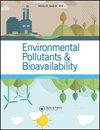Distribution and contamination pattern of heavy metals from surface sediments in the southern part of Caspian Sea, Iran
Q3 Chemical Engineering
引用次数: 31
Abstract
This study concentrates on the speciation and distribution patterns of some heavy metals (Pb, Ni, Cd, Zn, and Cu) in surface sediments in the southern part of the Caspian Sea, the biggest lake in the world, to obtain an overall classification for the origins of metals in the area using a sequential extraction technique. At all sampling stations, Pb, Ni, Zn, and Cu were mostly (>50%) accumulated in the resistant fraction, which indicated that there were no significant anthropogenic inputs of Pb, Ni, Zn, and Cu into the surface sediments of the south Caspian Sea. Guilan province on the west coast of Caspian Sea accumulated higher percentages of non-resistant fractions of Pb and Zn, while Mazandaran and Golestan provinces in the middle and western parts of the Caspian Sea, in the Iranian zone, accumulated higher percentages of non-resistant fractions of Ni and Cu. The present study revealed that the coastal area of the south Caspian Sea is still not seriously contaminated. Cadmium in Guilan and Golestan provinces were dominated by non-resistant fractions (55–69%), which indicated more anthropogenic inputs of Cd on the south coast of the Caspian Sea in comparison with other metals.伊朗里海南部表层沉积物重金属分布及污染模式
本文研究了世界最大湖泊里海南部表层沉积物中重金属(Pb、Ni、Cd、Zn和Cu)的形态和分布模式,并利用序贯提取技术对该地区金属来源进行了总体分类。在所有采样点,Pb、Ni、Zn和Cu主要富集在抗性部分(约50%),说明里海南部表层沉积物中没有明显的人为输入。里海西海岸的吉兰省积累了较高百分比的Pb和Zn的非抗性组分,而里海中部和西部的Mazandaran和Golestan省在伊朗地区积累了较高百分比的Ni和Cu的非抗性组分。本研究表明,南里海沿岸地区仍未受到严重污染。Guilan和Golestan省的镉以非抗性部分(55-69%)为主,这表明里海南海岸的镉比其他金属输入更多。
本文章由计算机程序翻译,如有差异,请以英文原文为准。
求助全文
约1分钟内获得全文
求助全文
来源期刊
CiteScore
1.62
自引率
0.00%
发文量
0
审稿时长
1 months
期刊介绍:
Chemical Speciation & Bioavailability ( CS&B) is a scholarly, peer-reviewed forum for insights on the chemical aspects of occurrence, distribution, transport, transformation, transfer, fate, and effects of substances in the environment and biota, and their impacts on the uptake of the substances by living organisms. Substances of interests include both beneficial and toxic ones, especially nutrients, heavy metals, persistent organic pollutants, and emerging contaminants, such as engineered nanomaterials, as well as pharmaceuticals and personal-care products as pollutants. It is the aim of this Journal to develop an international community of experienced colleagues to promote the research, discussion, review, and spread of information on chemical speciation and bioavailability, which is a topic of interest to researchers in many disciplines, including environmental, chemical, biological, food, medical, toxicology, and health sciences.
Key themes in the scope of the Journal include, but are not limited to, the following “6Ms”:
Methods for speciation analysis and the evaluation of bioavailability, especially the development, validation, and application of novel methods and techniques.
Media that sustain the processes of release, distribution, transformation, and transfer of chemical speciation; of particular interest are emerging contaminants, such as engineered nanomaterials, pharmaceuticals, and personal-care products.
Mobility of substance species in environment and biota, either spatially or temporally.
Matters that influence the chemical speciation and bioavailability, mainly environmentally relevant conditions.
Mechanisms that govern the transport, transformation, transfer, and fate of chemical speciation in the environment, and the biouptake of substances.
Models for the simulation of chemical speciation and bioavailability, and for the prediction of toxicity.
Chemical Speciation & Bioavailability is a fully open access journal. This means all submitted articles will, if accepted, be available for anyone to read, anywhere, at any time. immediately on publication. There are no charges for submission to this journal.

 求助内容:
求助内容: 应助结果提醒方式:
应助结果提醒方式:


